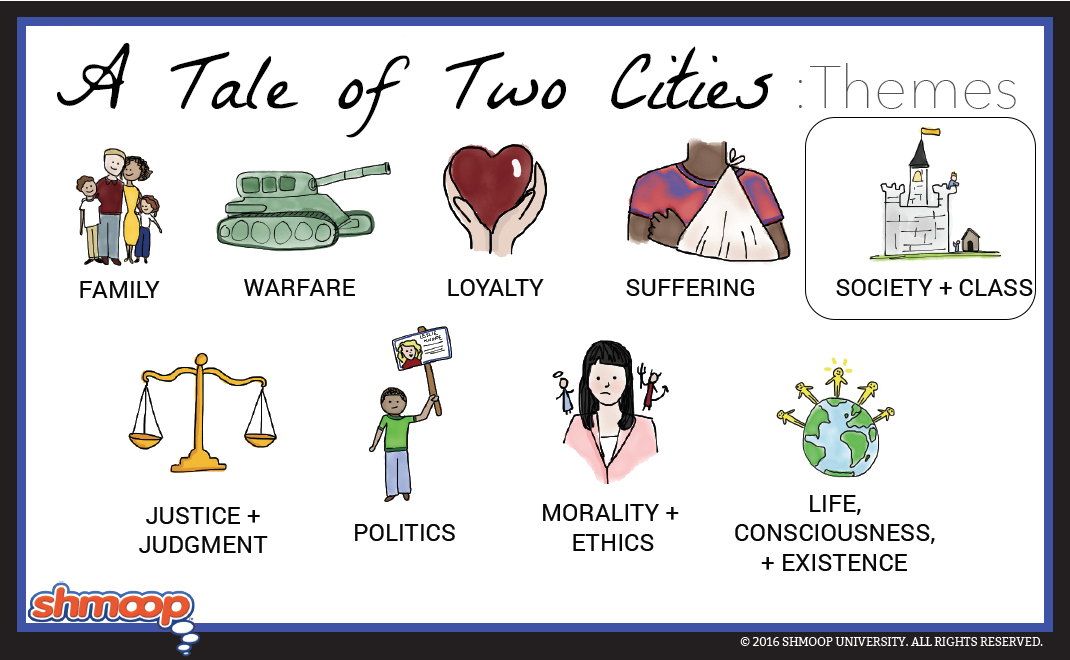 (Click the themes infographic to download.)
(Click the themes infographic to download.)
In A Tale of Two Cities, Dickens loves to demonstrate how rich the rich actually are. One guy even needs four servants (count them: FOUR) to make his hot chocolate every morning. It’s exactly this sort of excess that breeds discontent… especially when the poor are on their hands and knees in the street licking up drops of spilled wine. The French Revolution began as a critique of the aristocracy; as Dickens demonstrates, however, the "classless" formation of the new French Republic becomes yet another form of class violence. Someone’s always in power. And the powerless always suffer.
Questions About Society and Class
- How different are class relations in England from those in France? Why do the citizens of France revolt?
- Why does the novel shuttle between France and England? How does that contribute to our understanding of the revolution?
- Is Madame Defarge’s accusation of Charles Darnay retaliation for the role of the aristocracy in France? Why or why not?
Chew on This
A Tale of Two Cities may be set in France, but it’s actually a moral warning for the people of England.
Because the poor in France are never realistically depicted in A Tale of Two Cities, our understanding of the revolution is limited at best.